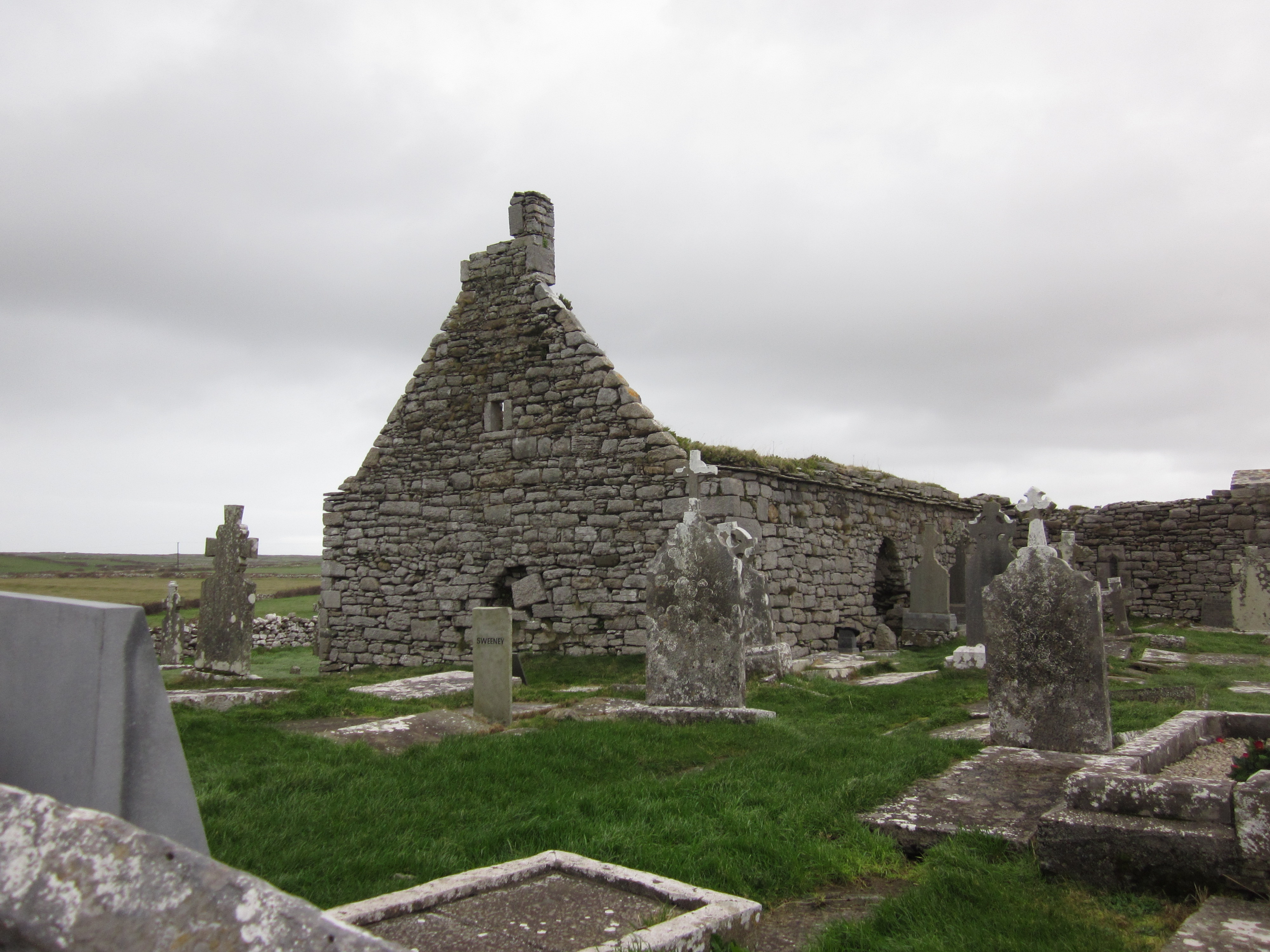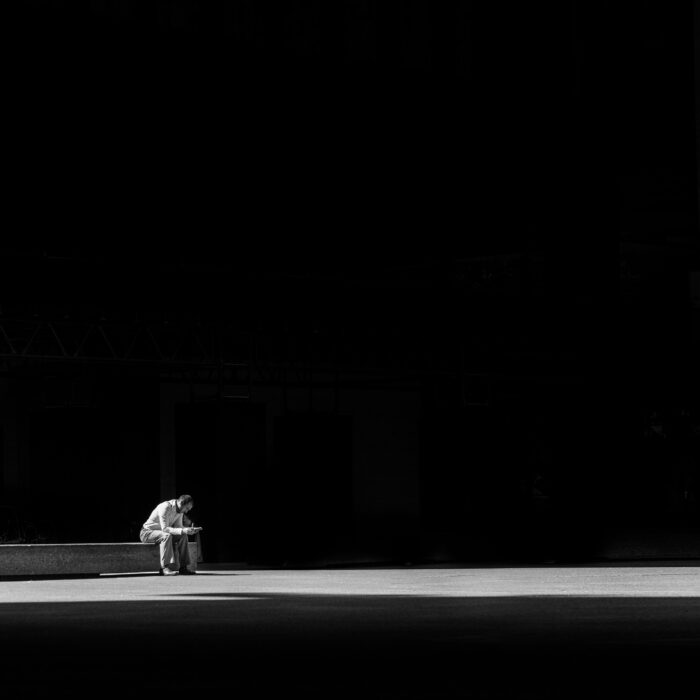You have no items in your cart. Want to get some nice things?
Go shopping
Ireland in January is beautiful as ever but stark and cold and, on this visit, I’ve lost count of the number of people who think I’m crazy to have come in the season when even the trees try to crouch out of the wind. “There’s little enough to see,” they say, or “Why not in April when the Burren is so lovely with flowers?” I’m here traveling to a conference in Wicklow, not by choice, and yet I would come again to Ireland in January. It is so very quiet here now, lacking in both the Christmas diversions of December and the festivals of February. It is also a vastly different experience from the tourist season and one finds more time to sit and talk with the people and listen to their stories.
I’m sitting in a room at the very comfortable Churchfield Bed & Breakfast in Doolin a little after 7:00 am. It’s still dark outside and won’t get light until after 8:00. Tomorrow my wife, Betsy, and I will start our cross-country trip – on toward Cashel and then up to Navan, down to Dublin, and then to Wicklow. Right now, though, I’m in Doolin and I can’t think of any place I would rather be. Doolin in January is magnificently unadorned; it is the thing itself without distraction. No festivals, no tourists – we’re the only tenants here at Churchfield – and no diversions; only the people who live here in town and the stories they tell and the wild, wonderful landscape of pastures and hedgerows stretching off in every direction and the scent of the sea on the winter air.
Across the open pasture next to this B&B there’s the ruin of an old stone church – the Killilagh Church, as I’ve learned it’s called – which was built around 1470 and is now a graveyard. It is common in Ireland to find graves inside the ruins of old churches and so it is at Killilagh. Older graves of Celtic crosses surround the church and there is a large, dark, mausoleum, the McNamara Tomb, the door hanging open, ringed by a rusting iron fence. Betsy and I found our way to it in the late afternoon yesterday. The sun was setting and, far off, we could see the Cliffs of Moher and the sea beating at the shore of Doolin Pier. It was incredibly silent there among the graves inside and around the ruined church save when a gust of wind would come suddenly rushing across the plain. It howled through the empty windows and then blew heavily past us and away down the hill.
Sitting here this morning, looking out the window of the sitting room, I should be able to see the church but beyond the glass is just darkness and the sound of the wind. Last night a gale blew in from the sea and the winds shrieked and screamed around Churchfield so loudly that I woke surprised to find the roof still attached to the beams above me. It is not much quieter now but has lost the Banshee wail it had a few hours ago. Slowly day will dawn and the light will grow and the low stone sides and tall back wall of the ruins will rise from the darkness out there like an open palm, fingers lifted.
One of the buildings from Old Doolin, it must have been impressive in its time and remains so even in ruin. It sits on the crest of a hill out about a mile from the main road here. The ruins of the rest of the town are just down across the stone bridge and off a cow path. It must have have taken so much work to build that church out there in the pasture, to position it as they did so the rays of the morning sun would have come in through the front to illuminate the altar. In the quiet of morning here, I think about those people who raised the town in stone from the fields and of their descendants who I’ve been living among and talking to the past few days.
Yesterday, at breakfast, we talked with our hostess, Maeve Fitzgerald, who told us about the time her husband went out to tend the cattle on the hills of the Burren, this rocky, craggy, landscape which is like nothing I’ve ever seen except maybe the Isle of Skye, and how he was caught out there in a sudden rain storm and how, at the same time, the wind came screaming in from the sea so fast and so strong she couldn’t even open the car door to drive out and see if he needed help. She told us how it all worked out fine and then, without pause, began talking about the great flood years ago which struck Doolin from the sea without warning and how the people built their houses from concrete after that and then she went further back to tell of those who came before who built the original town of stone. It was fascinating the way she moved so easily through time. She made her own tale a seamless continuation of the lives of those who once walked these same roads and fields, kept their cattle amidst the crags of the Burren, and walked to the Killilagh Church far out in the field.
Just down the road from where I sit is McGann’s Pub. When we were there last night, talking with some lovely folk by the fire in the front room, I was reminded of one of my favorite lines from J.M. Synge’s Aran Islands: “I am in Aranmor, sitting over a turf fire, listening to a murmur of Gaelic that is rising from a little public-house under my room.” I used to carry around a copy of Synge’s work, long before I ever came to Ireland for the first time, because the words wove so sturdy an image of the country I looked forward to seeing one day. McGann’s brought Synge’s line completely to life for me, there by the fire with a pint of Harp, listening to the lyrical murmur of Gaelic all around me as some local musicians tuned their instruments in the corner.
Synge stayed in Doolin after he’d taken Yeats’ advice to go to the Aran Islands and learn to write. Those islands, where he spent some of his most productive years among the people who inspired his classics Riders to the Sea and Playboy of the Western World, are right off the coast here. Standing down by Doolin Pier yesterday, we could see the smallest of the Arans, Inis Oirr, rising out of the rolling sea. Yeats directed Synge toward the Arans to live among the people and to write about them honestly. He felt Synge needed to reconnect with what it meant to be Irish. In Aran Islands one can see how well Synge did connect as he weaves the stories of the people into his own and gives Ireland as a gift to those who might never have a chance to visit themselves.
In the pub that night, I wondered if Synge ever stopped in there, whether it was known as McGann’s back then, and thought to ask the owner/bartender, Tony McGann. He smiled and said, “If he wasn’t here, he was near.” McGann’s is such a comfortable and easy rest. It embodies Irish hospitality and warmth. We’d only been in town a few hours when we went there for dinner the first night but we didn’t meet a single stranger there all evening.
Doolin is famous for its music and, sitting at McGann’s, I completely understood why. Irish music tells a story, even those tunes without words, but the story cannot touch you if the teller doesn’t really know it. These story-tellers at McGann’s knew their tales well. I would have liked to have stayed longer and heard more but, after a day in the winds at the Cliffs of Moher and wandering lovely Lindoonsvarna, we needed to return to Churchfield B&B to get some rest.
Tony McGann, who told me about the ruins of old Doolin and how to find them, related the tale of the old stone village as though he had grown up there centuries before. He told me all about Killilagh Church and how Cromwell’s men burned it in 1649 and how the empty McNamara tomb was used as a jail during the “Troubles”. He spoke of the so-called potato famine of 1845 and how it was hardly a famine and more of a genocide perpetrated by rich landowners on the poor. The memory of the past is very much alive in the tales of the people of Doolin. They are as aware of what happened in 1649 or 1845 or 1916 as they are of this morning’s news.
I just looked up from writing here and there’s the ruin of the church, solid and enduring as the earth beneath it, rising darkly now in the pale glow of the morning. Once the light starts it grows steadily and then, all at once, it’s day; pretty soon the whole of the church will be visible out there across the field. You go in through the ruined gate and the silent graves stand all around, some fairly recent such as those from 2011, all neatly kept. Some are from the 18th and 19th centuries and those are as well cared for as the newer ones.
Now the church is wholly risen from the darkness and standing silently out there on the crest of the hill. Once upon a time the people of old Doolin would have been getting ready to walk to church on a Sunday morning or, who knows, maybe even already walking there. Looking out on the ruin I can almost see them – a long line of ghosts coming from every direction for Sunday services – and they all lived and died and the church fell into ruin and now it’s a graveyard. Their memory lives on, though, in the stories of the people who remember all that once was in the fields and valleys, the roads and ruins, of Doolin. I would return to Ireland in January just to hear their tales again.

About Joshua J. Mark
Joshua J. Mark is a freelance writer/editor/research professional with over twenty years of experience. He has lived in Greece and Germany and presently lives in Staatsburg, NY with his wife and daughter. Mark is a director, contributor, and editor for Ancient History Encyclopedia, a non-profit website offering accurate and up-to-date articles and images on ancient history. He is also published through Timeless Travels Magazine, Celtic Guide, History Ireland, Writes for All Magazine, Five Stop Story, and Hudson Valley Magazine. Mark is a part-time teacher of philosophy and writing at Marist College, Poughkeepsie, NY.



